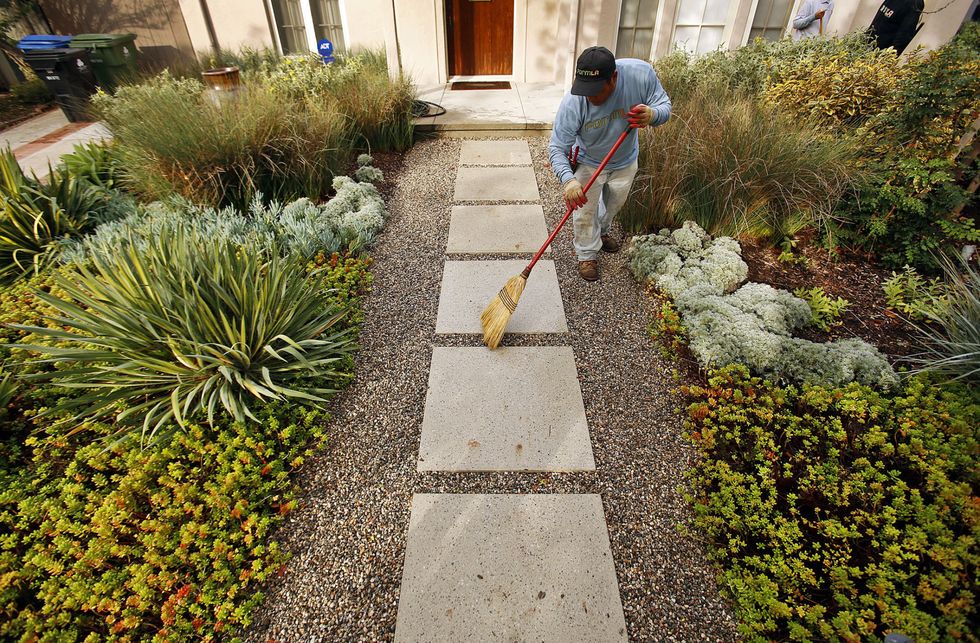A Comprehensive Overview to Creating and Implementing Effective Landscaping Solutions
The art and science of landscape design extend past mere visual appeals; they entail a thoughtful integration of style concepts, environmental stewardship, and functional implementation. What methods can one employ to guarantee these landscapes not just flourish however additionally thrive in harmony with their environments?

Understanding Landscape Design Concepts
One might question what foundational elements add to effective landscape layout. At its core, successful landscape design hinges on several key concepts that direct the setup and choice of components within an area. These concepts include unity, percentage, balance, and rhythm, each serving to produce a harmonious outdoor atmosphere.
Unity describes the cohesive partnership among various elements, guaranteeing that they interact visually and functionally. Equilibrium can be accomplished via in proportion or asymmetrical arrangements, enabling the landscape to really feel stable and inviting. Proportion involves recognizing the scale of aspects in regard to each other and the surrounding atmosphere, advertising aesthetic consistency and comfort.

Assessing Your Outdoor Space
Before carrying out the concepts of landscape style, a complete analysis of your outdoor space is crucial. This initial assessment assists specify the range of your landscape design task and ensures that your design lines up with the distinct attributes of your home. Begin by examining the measurements of your room, taking specific dimensions to understand the available area for various elements such as gardens, pathways, and outdoor patios.
Next, observe the existing functions of your landscape, including topography, soil quality, and water drainage patterns. These variables significantly affect plant option and positioning. Furthermore, evaluate the sunlight direct exposure across different areas throughout the day, as this will certainly influence the kinds of plants that prosper in your garden.
Consider the microclimates created by frameworks, trees, and various other challenges, as they can affect temperature and wetness levels. Take note of any existing plants or hardscape components that you desire to maintain or remove. This thorough examination prepares for a educated and efficient landscaping remedy, making certain that your style is not just cosmetically pleasing but additionally practical and lasting for several years to find.
Sustainable Landscaping Techniques
These techniques not just promote environmental equilibrium yet also enhance the useful and visual value of a landscape. Applying efficient irrigation systems, such as drip irrigation, lessens water waste and makes certain that plants receive sufficient wetness (Palm Desert Landscaping).

Another effective technique is the tactical placement of shrubs and trees to offer natural windbreaks and color, thus reducing power costs blog here (Palm Desert Landscaping). Rain yards can be integrated into the landscape layout to take care of stormwater overflow properly, filtering system pollutants prior to they enter waterways
Picking the Right Plant Kingdoms
Choosing the right plants for your landscape is important to attaining both visual charm and eco-friendly consistency. The procedure starts with an understanding of your neighborhood climate, dirt problems, and the particular microenvironments within your landscape. Evaluating elements such as sunlight exposure, moisture levels, and existing plants will assist you select plants that flourish in your unique setting.
Consider incorporating indigenous plants, as they are well-adapted to regional conditions, require less upkeep, and assistance neighborhood wildlife. Furthermore, selecting a diverse selection of species can enhance biodiversity while lowering the threat of disease and pest episodes. It is necessary to evaluate the growth practices, flowering durations, and seasonal shades of prospective plants to produce a natural and vibrant landscape.
Additionally, think about the intended use of the area; for instance, if the area will experience high foot web traffic, opt for resilient ground covers. By attentively choosing plants that straighten with both your aesthetic goals and ecological needs, you can produce a sustainable landscape that not just enhances your residential property however likewise adds positively to the bordering ecosystem.

Execution and Maintenance Methods
Once the best plants have actually been selected for your landscape, the emphasis moves to effective implementation and recurring upkeep techniques. Successful installment starts with correct site preparation, which includes soil screening to establish nutrient levels and pH, complied with by modifying the soil as helpful site required. Thoroughly organize plants according to their growth routines and light demands, guaranteeing appropriate spacing to advertise healthy and balanced growth.
Watering is an essential element of implementation. Establish a watering schedule that considers the specific needs of each plant species, adjusting for seasonal changes. Utilizing drip watering systems can boost water performance and reduce drainage.
Upkeep approaches have to be applied to make certain the long life and vigor of your landscape. Routine tasks include weeding, mulching, and trimming to regulate development and avoid disease. Fertilization should be performed based upon soil tests, providing the essential nutrients without over-fertilizing.
Checking for parasites and conditions is important; early detection can protect against considerable damage. Seasonal adjustments to upkeep routines, such as preparing and winterizing perennials for springtime development, will certainly make sure that your landscape continues to be visually enticing and healthy and balanced year-round.
Final Thought
To conclude, efficient landscape design remedies need a complete understanding of layout principles, precise analysis of outdoor rooms, and the application of lasting techniques. The choice of suitable plant types plays a crucial duty in enhancing aesthetic allure and ecological durability - Palm Desert Landscaping. Effective implementation and ongoing upkeep better ensure the long life basics and vitality of landscapes. By integrating these aspects, landscapes can be changed right into stunning, useful settings that promote biodiversity and contribute positively to neighborhood health.
One might wonder what foundational elements add to efficient landscape layout. At its core, successful landscape style pivots on numerous crucial principles that assist the arrangement and option of components within a space.Selecting the right plants for your landscape is important to accomplishing both visual appeal and environmental harmony. It is essential to examine the development routines, blooming durations, and seasonal shades of potential plants to create a dynamic and natural landscape.
When the best plants have been chosen for your landscape, the focus moves to efficient implementation and recurring upkeep strategies.